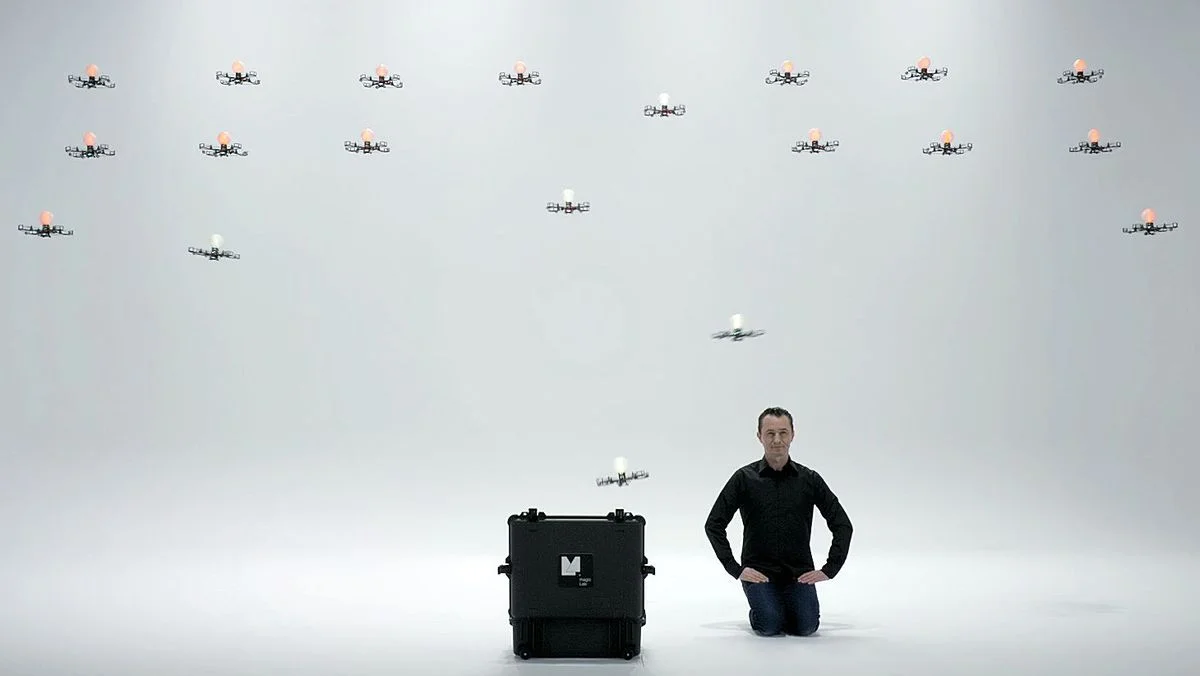Coke Is It
Coke is it is a robotic performance piece in which a hex-crawler robot named C3 searches and finds puddles of coke to suck up and spray on itself. The robot is programmed to do this until it is literally destroyed by the acidic cola and can no longer function.
Matt Kenyon’s art practice is called SWAMP, or Studies of Work Atmosphere and Mass Production. To quote from Kenyon’s website, SWAMP,
“focuses on critical themes addressing the effects of global corporate operations, mass media and communication, military-industrial complexes, and general meditations on the liminal area between life and artificial life.”(Lashinsky, Adam, An Artist’s Unflattering Corporate Portrait)
These themes are evident in all of Kenyon’s work but in this instance mass media and communication as well as the liminal area between life and artificial life are the most relevant.
Kenyon used the company Coca-Cola for this piece as it is the world’s largest beverage company with one of the world’s most recognizable logos. Coca-Cola’s marketing strategies infuse culture with well-being and elevated self worth to better position themselves and sell their product. This however is in contradiction with the actual consumable product which has no positive health benefits nor happiness inducing traits.
Kenyon said,
“I often have a robotic element in work which stands in for corporate systems or consumer-level systems, and shifts with material like Coca-Cola or fast-food drive through drive-in windows. This is how I expose contradictory elements in either consumer or corporate behavior.” (Lashinsky , Adam, March 12th, 2015, An Artist’s Unflattering Corporate Portrait)
By having the machine destroy itself Kenyon is exemplifying the power of the corporate world as well as the powerlessness of the individual. With companies manipulating and repurposing physiological needs, like for happiness and companionship, to sell their product, consumers are manipulated unknowingly. Examples include Coca-cola’s “Open Happiness” campaign, as well as their more recent “Share a Coke” campaign.
This uneven power construct can lead many individuals to extremely unhealthy and unbeneficial behavior which profits companies. The robot consumes its own product, coca-cola, until it dies, without knowing to do anything else other than consume. This machine exemplifies the mechanistic process of manipulation which comes from marketing and advertising.
Kenyon’s work makes the viewer reconsider Coco-cola as a brand and as a product, to see it as it is, without the associations and connotations which influence our views and decisions.
A similar work which also takes on advertisements is Addendum by David Hockney which replaces ads on websites with selected artwork. This is similar to Kenyon’s performance piece in that both bring attention to an area which is neglected but has a significant psychological effect. In Hockney’s case this is web advertisements, and not only does he bring attention to them but by replacing them with art he shows how these spaces could be used for thought provoking work instead of targeted ads. Also by switching out adverts with art Hockney is flipping the traditional revenue model for websites who profit from ads by page visits or clickthroughs. This only benefits the company advertising and the website, while the person is neglected and spammed with commercials. This way advertisements are repurposed from manipulating the consumer and possibly hurting them- making them buy things they do not need- to helping them, with visually pleasing and/or thought provoking artwork.
Another artwork which Kenyon’s Coke is it relates to is the work of the famed artist Andy Warhol. Warhol, most famous for his Campbell Soup cans and Marilyn Monroe portrait rooted his work in pop culture. His soup cans featured all of the different flavors of Campbell’s printed large and mounted in a square. His work emphasized the variety of the product while also exaggerating its solidarity- in packaging and design. Warhol’s worked with Coca-cola cans very early in his career as his fascination sprouted for marketing, advertising, and the relationship between consumer and company because Coca-Cola was iconic and the antithesis of what he wanted to represent. Coke is it similarly uses the incredibly recognizable brand but is more so a critique of marketing than Warhol’s work which more highlights it in an artistic medium, recognizing its power and ability to influence.
Kenyon raises important attention to the tacit communications which companies employ to create associations with their products. By bringing attention to this Kenyon forces the consumer to reconsider these associations and see the product as is, a soda, not happiness, not friendship, but a beverage with acidic qualities and high sugar.
CITATIONS
Coke is it. (n.d.). Retrieved April 25, 2016, from https://vimeo.com/10856701
Lashinsky, A. (2015, March 12). An artist's unflattering corporate portrait. Retrieved April 25, 2016, from http://fortune.com/2015/03/12/matt-kenyon-artist-corporations/
Binlot, A. (2015, March 25). Andy Warhol's Coca-Cola Art Highlighted In Exhibition Commemorating The Bottle's 100th Anniversary. Retrieved May 17, 2016, from http://www.forbes.com/sites/abinlot/2015/03/25/andy-warhols-coca-cola-art-highlighted-in-exhibition-commemorating-the-bottles-100th-anniversary/#4853f3e92a86









